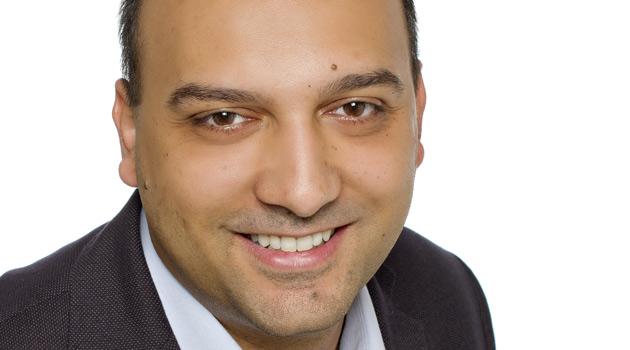Civil society members of Czech Gov't Commission on Roma Community remind MP that Holocaust denial is criminal

The civil society members of the Czech Government Inter-ministerial Commission on Roma Community Affairs have been outraged by Czech MP Tomio Okamura’s public doubting of the suffering undergone by Romani people in the concentration camp at Lety u Písku. "Through his remarks published on 1 August 2014 by Parlamentní listy, [Okamura] has denied historically-known facts about the purpose for which the camp was established and what life was like there for the prisoners," reads a statement provided to news server Romea.cz by David Beňák, vice-chair of the Commission.
"[Okamura has] downgraded the murder, for racial reasons, of 326 Romani prisoners in the camp, 241 of whom were children, to a mere case of deaths ‘as a result of old age and the diseases they brought with them as a result of their previous travelling lifestyle’. We must remind this MP that the Czech Republic is not a country where Holocaust denial is permitted – on the contrary, it is among those civilized countries where denying or doubting the Holocaust is prevented by law," the statement reads.
Tomio Okamura’s statement about the camp at Lety u Písku:
"When it comes to Lety, it would be good to clarify what we want to build there. According to the information available, this myth that it was a Romani concentration camp is a lie. There was a labor camp there for people who avoided proper work, including Czechs and Germans in the Protectorate. They were not interned on the basis of ethnicity, but on the basis of the gypsy way of life, which means that no working Roma were there. For most of the time before the camp closed the guards were not armed and the camp commander took his servant, who was evidently also his lover, to the cinema. No one was killed at the camp – people died there as a result of old age and the diseases they brought with them as a result of their previous travelling lifestyle. However, there was a basic problem with the camp commander, who on the one hand did really beat the prisoners and on the other hand covered up the poor state of the camp, but he was removed and medical aid was sent to the camp. The victims of the camp definitely were not victims of any kind of Holocaust. On the contrary, comparing them to Holocaust victims disrespects the actual victims of the Holocaust, whether they be Jews or Roma, who perished in the real concentration camps. Naturally I condemn and reject any kind of violence against people," Okamura told the tabloid news server.
The history of the concentration camp at Lety
The original space at Lety served in 1940 as an accommodation facility for construction workers. Subsequently, a disciplinary labor camp was created there on the orders of the Interior Minister of the Protectorate Government, Josef Ježek, on 15 July 1940, issued on the basis of Government Decree No. 72 on disciplinary labor camps dated 2 March 1939.
That particular decree had been issued prior to the country being occupied by the Nazis. According to the decree, "wandering gypsies and other vagrants living in the same way who are capable of work, beggars by trade and those who make a living from begging (children, etc.), gamblers by trade, inveterate idlers, loafers and persons making a living from dishonest earnings (prostitution, etc.), whether their own or those of others" were to be rounded up and concentrated in particular facilities.
The first 12 prisoners arrived at Lety on 17 July 1940. On 1 August 1942 the camp was changed into a "Gypsy camp" and subsequently entire Romani families were transported there.
The concentration camp began running on 1 August 1942 and was closed on 4 May 1943. Its capacity was increased to accommodate up to 600 prisoners, but that number was soon exceeded, as during the course of August 1942 more than 1 100 children, men and women were interned in the camp.
The camp was not equipped with the necessary hygienic or other facilities for such a large number of people. The prisoners often had to bathe in a nearby fishpond.
Until August 1942, only men were imprisoned at Lety. After that, children and women were also brought there to rot in completely unsatisfactory conditions.
After the big influx of August 1942, whole families were mostly brought to the camp as well as individuals. A total of 326 people died directly in the Lety camp, 241 of them children.
A temporary burial ground near the camp was used to inter 120 victims. Another 540 prisoners from Lety perished while being transported to Auschwitz.
A total of two mass transports were undertaken. The first one departed on 3 December 1942 as a transport of so-called asocials, 16 men and 78 women, to the Auschwitz I concentration camp.
The second transport practically meant the liquidation of the Lety camp, as it included 417 prisoners who went to the Auschwitz II-Birkenau concentration camp. While the first transport took place on the basis of a decree about crime prevention, the second took place on the basis of Himmler’s decree of 16 December 1942, which ordered the transport of all Romani people to the Auschwitz concentration camp.
The remaining 198 prisoners were then relocated to the "gypsy camp" at Hodonín near Kunštát (the so-called Žalov camp) or were interned in camps in Pardubice and Prague. On 13 May 1995, at the site of the mass grave next to the former camp, a memorial was unveiled with the inscription "To the victims of the gypsy camp at Lety 1942-1943. Never forget. Ma bisteren."
On 13 May 2010 the Lety Memorial was officially opened there. A government decision has entrusted the Lidice Memorial with its management.